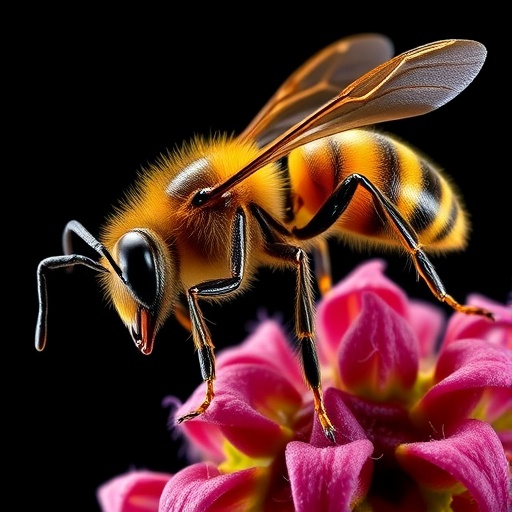The intricate determination of biological sex across the animal kingdom presents a captivating narrative of evolutionary diversity. While the XY chromosomal system governs sex determination in humans, this mechanism is but one of many variations nature has devised over millions of years. Species diverge remarkably in the genetic and molecular orchestration that decide male and female development, providing fertile ground for scientific exploration and discovery.
In mammals, the presence of the Y chromosome and specifically the SRY gene has long been recognized as the pivotal switch triggering male development. However, this classical XY system contrasts sharply with the haplodiploid mode of sex determination found in certain insects like bees, wasps, and ants, which comprise approximately 12% of all animal species. Within this system, sex is not dictated by distinct sex chromosomes but rather by the number of chromosomal sets: fertilized eggs develop into diploid females, while unfertilized eggs develop into haploid males.
The honeybee has served as a model for understanding haplodiploidy for over twenty years, with the complementary sex determiner (csd) gene identified as the key locus governing sex fate. A remarkable aspect is that females possess two different csd alleles, whereas males are hemizygous for a single allele. However, whether this specific gene functions widely among other bee species, and if it represents a conserved mechanism across the diverse Hymenoptera order, has remained an open question—until now.
Recent groundbreaking research spearheaded by Matthew Webster at Uppsala University has delivered crucial insights into this enigma by focusing on the red mason bee, Osmia bicornis. This solitary bee species, increasingly popular in ecological gardens, offered an ideal candidate for genomic exploration. By sequencing its entire genome and meticulously examining nests for rare males with two identical copies of the sex gene, the team pinpointed the precise genetic locus underlying sex determination for Osmia bicornis.
Contrary to expectations shaped by the honeybee’s csd gene, the team discovered a novel sex-determining gene named ANTSR in the red mason bee. The identification of ANTSR as a functional gene that regulates sex fate challenges previously held assumptions about the uniformity of sex determination pathways within Hymenoptera. Moreover, the revelations extend beyond bees: ANTSR was recently implicated in sex determination in ants, signifying a shared molecular mechanism conserved over an evolutionary timescale surpassing 150 million years.
Intriguingly, the ANTSR gene does not align with classical protein-coding genes; it represents a long non-coding RNA locus. Such genes do not translate into proteins but instead play regulatory roles, influencing complex developmental pathways. Depending on the copy number of ANTSR alleles present, the gene functions as a molecular switch, triggering divergent pathways that culminate in male or female development. This mode of regulation adds a sophisticated layer to our understanding of haplodiploid sex determination.
The discovery that ANTSR operates as a sex-determining gene across both bees and ants evokes profound questions about the evolutionary forces shaping sex chromosome biology. Why do some species within this group employ distinctly different master sex-determining genes, such as csd in honeybees, while others converge on ANTSR? This research posits that while the haplodiploid system is widespread, the molecular players may exhibit remarkable plasticity, shaped by the nuances of each species’ evolutionary history.
Matthew Webster, the lead author on the recently published paper in PLOS Biology, emphasizes the transformative potential of these findings. “ANTSR’s conservation across multiple species hints at its central role in sex determination for a vast array of Hymenoptera, including over 150,000 species of bees, wasps, and ants. Unlocking the molecular intricacies of how ANTSR triggers male or female fate could revolutionize our grasp of insect development.”
Unraveling the molecular mechanisms behind ANTSR’s function can shed light on the maintenance of genetic diversity within natural populations, a crucial factor for viably sustaining haplodiploid species given their unique reproductive systems. Heterozygosity or allelic variation at sex-determining loci directly influences population dynamics, with significant implications for evolutionary fitness and resilience against environmental stressors, parasites, and diseases.
Beyond basic biology, understanding sex-determination genes such as ANTSR has pragmatic ramifications for conservation and agricultural practices. Pollinator species like bees face global threats, including habitat loss, pesticides, and climate change, exacerbating the urgency to maintain robust populations. Insight into the genetic underpinnings of their reproductive biology can inform targeted breeding programs, bolster conservation strategies, and potentially aid in mitigating declines in pollinator abundance critical for ecosystem health.
The research also prompts reflection on the broader context of sex chromosome evolution. While haplodiploidy differs drastically from the XY system found in mammals, both represent solutions to fundamental biological imperatives. Studying ancient sex-determining mechanisms like ANTSR provides a window into the evolutionary innovation and adaptability of life’s genetic toolkit across deep time.
In conclusion, the identification of ANTSR as an ancient and conserved sex-determining gene in bees and ants marks a paradigm shift in our comprehension of haplodiploid sex determination. This research not only uncovers a molecular thread connecting diverse species across millions of years but also sets the stage for future work decoding the intricate regulatory networks governing sexual development. The profound implications extend from evolutionary theory to applied entomology, underscoring the value of integrating genomics, developmental biology, and ecology to solve biological puzzles.
The full-depth genomic analysis by Webster’s group paves the way toward elucidating how subtle gene dosage effects and non-coding RNA functions orchestrate sex determination outside the familiar XY chromosome narrative. As molecular tools advance, the capacity to manipulate or protect these genetic switches holds promise for agriculture, beekeeping, and conservation biology. The broader scientific community eagerly anticipates further revelations on how nature crafts sex, survival, and species continuity.
Subject of Research: Sex Determination Mechanisms in Bees and Ants
Article Title: Genetic mapping in the red mason bee implicates ANTSR as an ancient sex-determining locus in bees and ants
News Publication Date: 7-Nov-2025
Web References: DOI: 10.1371/journal.pbio.3003458
Image Credits: Demetris Taliadoros
Keywords: Sex determination, haplodiploidy, ANTSR gene, Osmia bicornis, Hymenoptera, long non-coding RNA, genetic mapping, evolutionary biology, pollinator genetics, bee conservation




